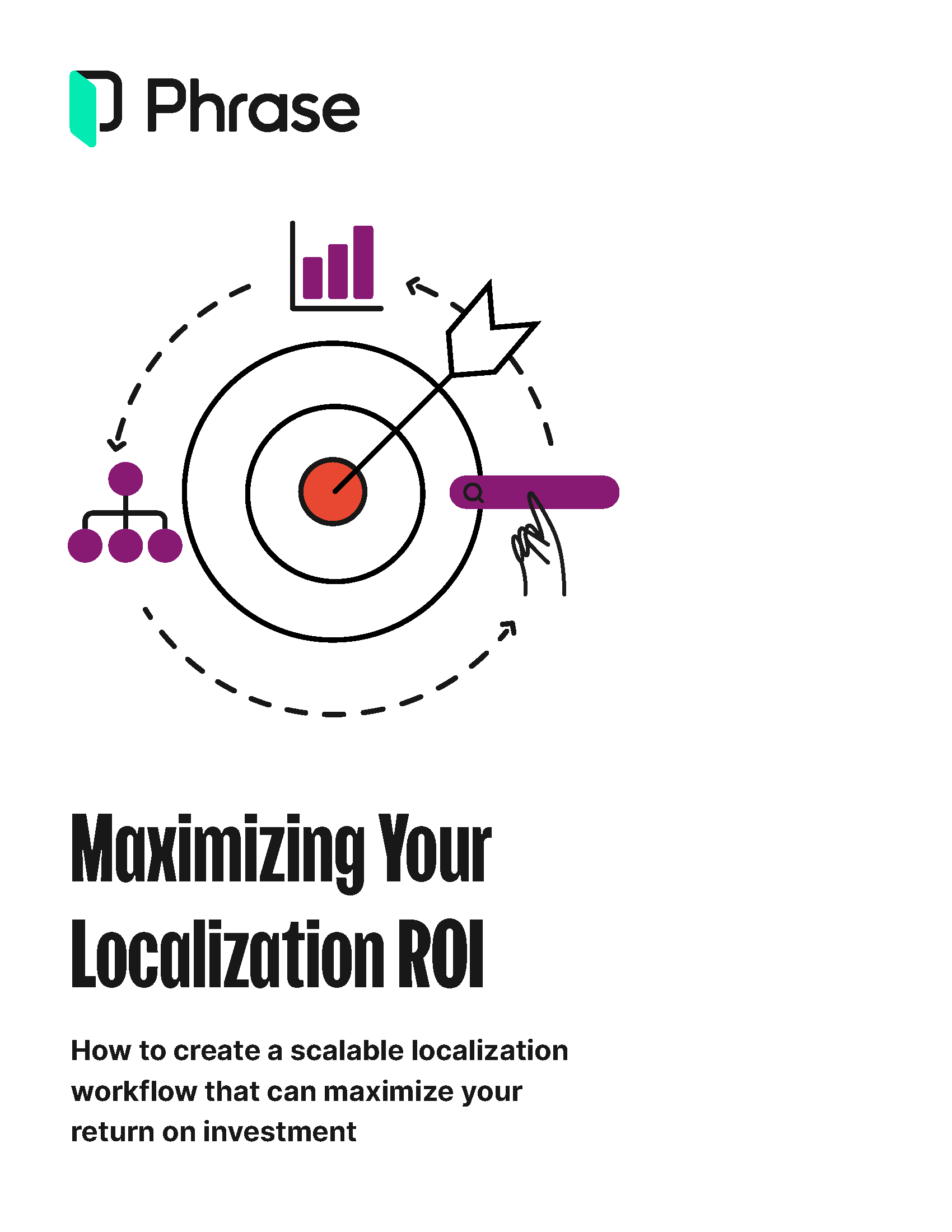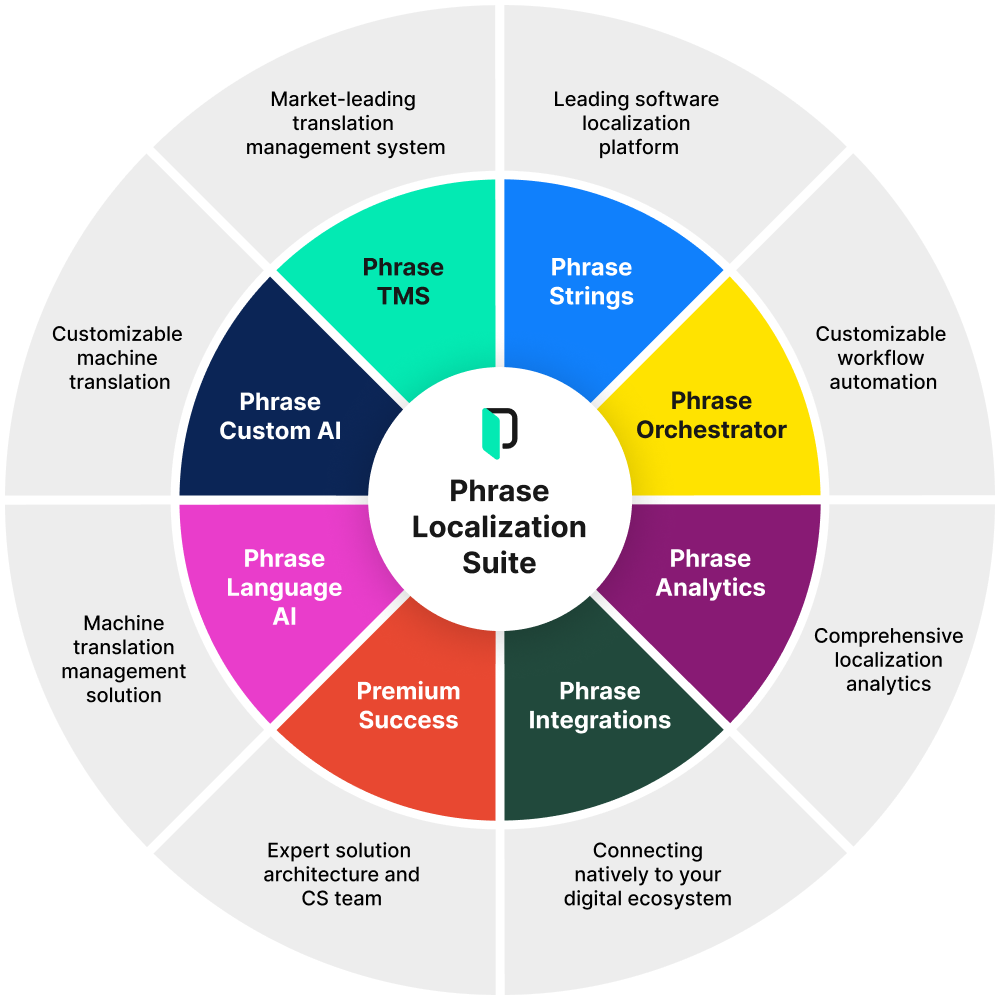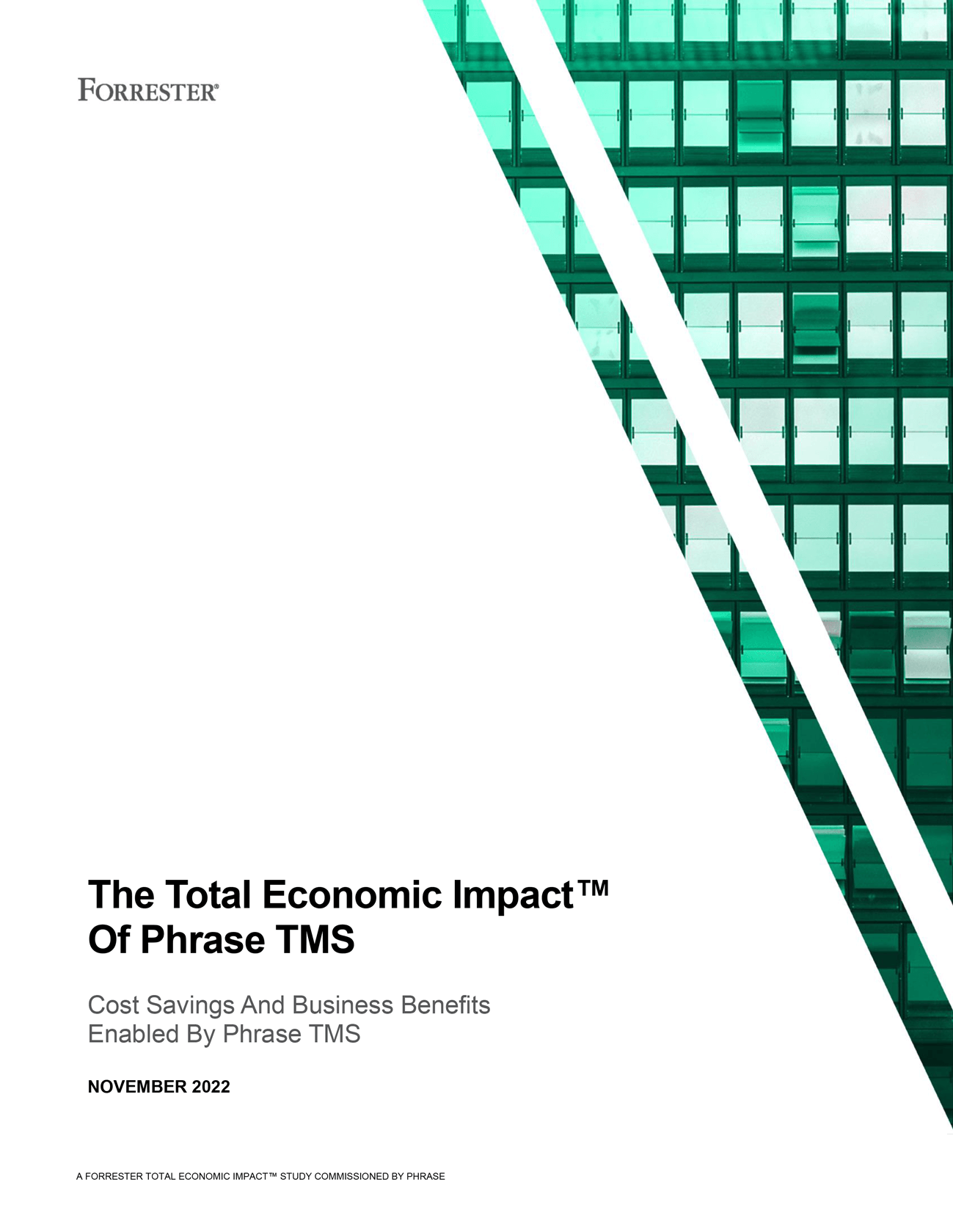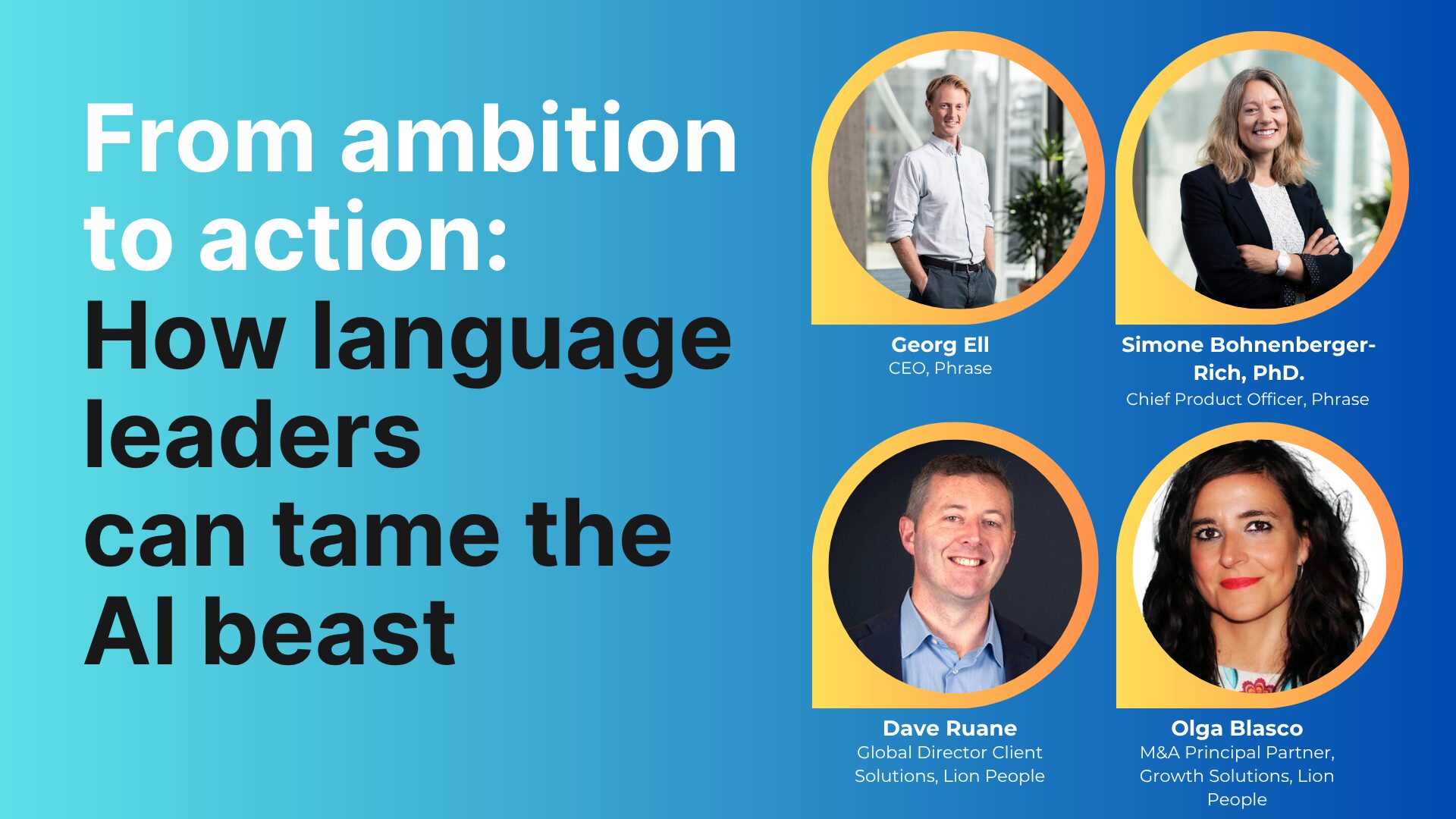Localization strategy
Tech’s New Frontier: 3 Ways to Redefine Localization Management

Managing the localization operations for global tech software that supports dozens of languages across 10 markets is a bold endeavor. Even with positive strides, the rising pressure in the global market keeps reminding you about the importance of continuous innovation in tech.
To continue to support the company’s global ambition, the localization team must stay relevant and on top of its game without forgetting your program’s goals trifecta—delivering work on time, to the desired levels of quality, and within budget.
The challenge is your team’s limited bandwidth, hiring freeze, and limited budget. Add to the mix that you will soon need an RFP to replace the legacy TMS with one that integrates seamlessly with machine translation (MT). You’ve got your hands full.
You already know the solution: Embracing the power of tech will allow you to continue to optimize existing workflows, support future growth plans, and do less with more.
An enterprise-grade TMS will not only help you streamline existing workflows but also empower your team to concentrate on areas where their linguistic and technical expertise can make the most impact—such as building connections with other stakeholders to drive the company’s strategic growth.
Keep reading to uncover 3 essential best practices you will want to adopt to strengthen your program’s role as a growth enabler for your company.
Gather meaningful data on internal demand
Global businesses must understand and adjust to market demand for their strategies to thrive. This holds true for the localization program as well. You, too, must adapt to your internal customers and the evolving landscape—aligned with your company’s strategic goals.
Turning to data is essential—traditional localization KPIs like throughput or cost serve as a good starting point—before determining where to allocate your budget and resources. Still, KPIs you’re already tracking will only reveal part of the story.
To complete it, initiate conversations that uncover the requirements and objectives of your stakeholders: How their needs evolve in light of emerging tech such as AI, what constitutes “normal” localization demand that can be accommodated, how much additional work might be on the horizon, etc. Ask any of the following questions—they will illuminate work areas for the foreseeable future.
| Mapping internal demand: Key questions for identifying… | |
| Demand type, volumes, and frequencies | Tech, processes, innovation blind spots |
| Who requests support from the localization team? | What are the commonalities between requests? |
| How often do translation jobs become available? | What tools and platforms do other teams use? |
| What content types and file formats are required? | Could others benefit from refreshing the existing localization tech, and how? |
| What are the primary drivers of demand (e.g., speed, cost, quality, etc.) | What do you stand to gain by implementing MT-ready solutions? |
| Do some markets require more attention than others, and if so, why? | What drives the AI debate, and how could AI-powered solutions be implemented in an innovative way? |
Your first step—and one you will repeat every so often—will be to take stock of the situation and analyze internal localization demand in all its types, sizes, and frequencies before moving on to reducing variance and learning what to prioritize, where to streamline, and what to optimize.
Prioritize content streams by impact
Learning to prioritize is one of the critical areas of work for any localization department—and that’s fine when you realize that not all content was created equal. Maintaining top-notch translation quality while managing many assets across different content types and languages may not always be feasible.
That’s why aligning with stakeholders on which assets will have the highest impact on the target audience in each market is a smart move. Always prioritize assets based on visibility and longevity.
On the one hand, by focusing on key customer-facing assets, you ensure that the localized versions accurately represent your brand. On the other hand, by localizing content that will remain relevant for an extended period, you ensure that your efforts have a long-lasting impact across cultures.
With this prioritization approach, you can make smarter decisions about when to utilize machine translation, focus on post-editing efforts, or engage professional linguists for translation or transcreation. Ultimately, it enables you to allocate your localization budget more effectively and maximize the ROI.
| The right translation method for the right content type | ||
| Content type | Visibility | Method |
| Internal documentation
Website footer Instruction manuals Product reviews and other user-generated content Chat or email support messages Customer inquiries |
Low | Machine translation |
| Product titles
Product descriptions Knowledge base articles FAQs Back-end metadata (image alt texts, captions, meta titles, or descriptions) |
Medium | Machine translation post-editing |
| Homepage
Landing pages Blog posts Ebooks and guides Campaign emails Newsletters Press releases SEO content |
High | Human translation |
| Brand names
Campaign slogans and taglines |
High | Transcreation |
Review your current operations to assess the effort applied to each content type. Cross-reference this with the collected data to determine if the current approach still aligns with your goals. You might be surprised by the optimization opportunities that arise from this analysis.
Don’t hesitate to streamline where necessary
The matrix above is a practical tool for reviewing common localization options based on content type and impact, but there are a few more benefits to gain by learning how to prioritize:
- By doing so, you can identify obsolete workflows or creative alternative solutions. For example, you may no longer need in-country customer support agents where a machine-powered solution such as a multilingual chatbot can do the work.
- It may lead you to realize—ideally in cooperation with your colleagues in marketing or sales—that you may no longer need to support all the languages you support now. Removing a language from the list (and perhaps looking at MT solutions instead of human translation) is common. It is not just a matter of shedding cost, but if the market data no longer justifies its impact, you’re just being smart and achieving more with less.
This may appear counterintuitive—and you certainly want to consider all parties involved in the decision—but sometimes, removing a workflow or a language that no longer offers a return on investment is just common business sense. It will free up valuable time and resources for other areas.

Dive deeper
Deploy localization as a lever for growth
Learn how to develop and implement a cost-effective localization strategy that ensures a strong return on investment.
Orchestrate fully automated localization workflows
With a regular cadence of releases and an ever-increasing volume of content in diverse languages, scaling challenges may confront you more often, and more time and people may be needed to handle all the tasks coming your way. That’s why orchestrating automated localization workflows to the tune of your global expansion strategy can make all the difference.
A robust TMS makes it possible to efficiently create, manage, and monitor intricate translation workflows from start to finish. You can add as many triggers, actions, and conditions as needed, generate multiple workflow versions, and seamlessly edit or switch between them. Additionally, it allows you to monitor workflow performance, identify errors, and review each execution to address any issues.
By eliminating the need for workarounds and manual, time-consuming, or resource-heavy processes, a modern-day TMS designed with automation in mind empowers you to:
- Increase operational efficiency and productivity with enhanced visibility throughout
- Boost cross-functional alignment, eliminating potential bottlenecks early on
- Break down data silos and make better-informed decisions
- Allocate resources more effectively
Finally, devising self-serviced, automated localization workflows that suit your business needs will free up valuable resources for innovation.
With less time spent on workflow management, you can concentrate your efforts where human expertise is most impactful for the business—ensuring brand tone and consistency across languages, building bridges across your organization, and more.
You have the power to redefine localization management
The common denominator of all effective localization strategies is a well-integrated translation management system.
When companies tap into the latest technology to facilitate localization operations, they can build deeper connections between people worldwide and drive growth more quickly. However, you can only ensure a strong return on investment when you rely on a technology partner who can cover all localization needs across your organization.
Forward-thinking companies rely on the Phrase Localization Platform to assume ownership and take control of multilingual content management from the beginning. By harnessing the power of the entire suite, localization managers can effectively connect, automate, and manage all localization activity across their organizations.
Technology should suit the user—not the other way around—and nobody knows this better than you.
That’s why the Phrase Localization Platform is the right partner with a vision for any growing organization looking to expand globally. It only takes a step forward to discover opportunities for your business.

The value that Phrase provides to global businesses was reinforced by a recent independent study conducted by Forrester Consulting. The study delved into the potential ROI that enterprises could achieve through the implementation of Phrase TMS, our enterprise-ready translation management system.
The result is eye-opening: A composite organization leveraging our platform achieved a 30% reduction in the time spent managing translation submission requests over 3 years. Interviewees also reported improved translation team efficiency and a growing impact on corporate goals.

Forrester Consulting
The Total Economic Impact™ (TEI) of Phrase TMS
Find out the potential cost savings and business benefits enabled by Phrase TMS—with this study by Forrester Consulting.





